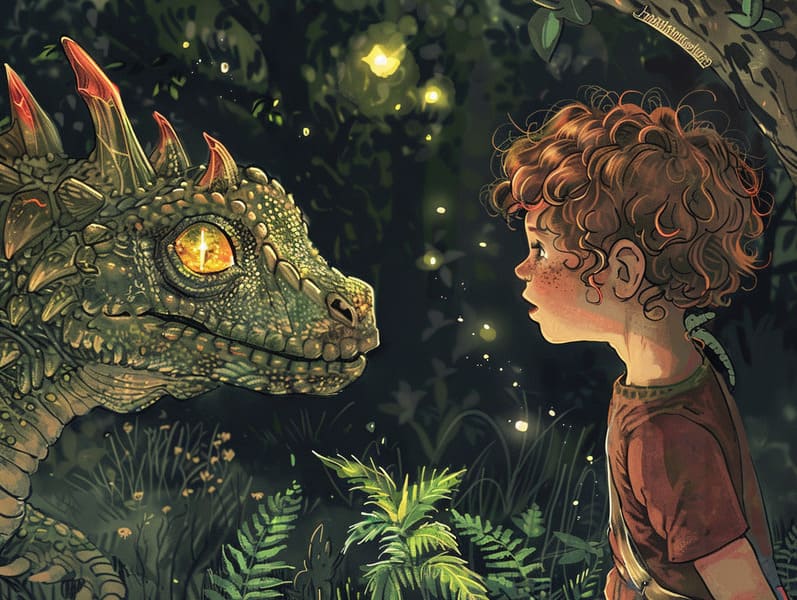
Grimm's fairy tales have old origins. These stories have been conveyed from one generation to the next millennia before they were ever written down. They originated from a variety of backgrounds, including Middle Eastern traditions. They were initially narrated among adults, often carrying themes and messages reflective of the societal norms and beliefs of the time.
The Brothers Grimm, Jacob and Wilhelm Grimm, were among the first to gather many of these beloved narratives. Their anthology, "Grimm's Fairy Tales," included tales like "Cinderella," "Hansel and Grethel," and "Little Snow White," which have since become staples in the world of iconic fairy tales. Similarly, Andersen's magical stories, such as "The Mermaid's Tale," and "The Duckling's Story," have won hearts worldwide, guaranteeing their place in the pantheon of famous fairy tales.
Even though they are old, traditional fairy tales remain as important as ever, especially as kids' bedtime tales. These delightful tales are now available in multiple formats, including vividly illustrated books, enchanting animations, and digital fairy tales.
Their lasting presence can be traced to several enchanting factors:
Significant Morals: Ancient fairy tales often whisper important moral lessons. Tales like "The Tale of the Boy Who Cried Wolf" teach the merit of sincerity, while "The Tortoise and the Hare" exemplify the virtues of persistence and unpretentiousness. These stories offer young readers clear distinctions between virtue and vice, forming their moral compass in a subtle yet impactful way.
Kindness and Comprehension: Ancient fairy tales frequently showcase beings facing challenges and problems, prompting kids to comprehend with their struggles and champion their triumphs. For instance, "The Tale of Beauty and the Beast" illustrates the merit of looking past the exterior to know the true character of a soul, developing empathy and appreciation.
Cultural Knowledge: Many old fairy tales are deeply embedded in the cultural contexts from which they sprang. Delving into these narratives can provide captivating looks into different heritages, fostering a sense of world appreciation and recognition.
Creativity and Imagination: The extraordinary elements in timeless fairy tales—supernatural elements—provoke children’s fantasies. These tales guide readers to extraordinary realms, firing up imaginative thinking and a sense of amazement that lasts a lifetime.
Traditional fairy tales are not only fascinating but also educational. They work as enchanted tools online fairy tales for free in enhancing various mental and emotional abilities in little ones. When timeless fairy tales are narrated, they enhance verbal skills by presenting new vocabulary and complicated sentence structures. This practice also enhances hearing abilities and focus, as the young hang on every word, enthusiastic to see what happens next.
Furthermore, debating the themes and characters of classic fairy tales can enhance thought processes and problem-solving abilities. Kids are educated to discover patterns, expect results, and make sense of cause and effect. These deliberations also assist little ones convey their thoughts and feelings, contributing to their emotional intelligence.
In today’s electronic age, the accessibility of web-based fairy tales has made these tales more acquirable than ever. Web platforms and web apps present large libraries of bedtime fairy tales that can be enjoyed or listened via anytime, anywhere. Fairy tales spoken are particularly sought after, featuring an interactive way for children to experience these alluring stories. Narrated books and read-out-loud videos lead characters and settings to life, often accompanied by entrancing audio effects and background music that intensify the narrative journey.
The unending appeal of traditional fairy tales lies in their ability to modify to modern times while holding onto their core values. Contemporary modernizations of these narratives often show more varied protagonists and modern settings, making them meaningful to today’s audience. However, the core values of spirit, charity, and even-handedness remain unchanged, continuing to move audiences of all ages.
Ancient fairy tales also offer a sense of warmth and homeliness. They introduce a well-ordered narrative with a distinct beginning, middle, and end, often finishing with the termination of conflicts and the triumph of right over wrong. This regularity can be solacing for kids, making available a sense of sturdiness in an ever-changing world.
Classic fairy tales continue to mesmerize and train new generations, maintaining their elegance and importance in modern society. As bedtime stories for kids, they render a perfect blend of fascination and comprehension, aiding moral values, empathy, and creativity. The abundance of free fairy tales online and the popularity of fairy tales recited secure that these old stories remain within reach to new generations.
By safeguarding and conveying these stories, we continue to laud the rich tapestry of cultural legacy and cultural heritage. Whether you are accessing a vibrantly illustrated book, experiencing a virtual library, or listening via an read-aloud story, the elegance of traditional fairy tales is always within reach. These narratives show us of the endless influence of narratives and its ability to unify us across time and space.
Regardless if you are experiencing a vividly illustrated book, browsing a virtual library, or playing an narrated book, the captivation of Grimm's fairy tales is always within reach.
These fairy tales emphasize of the perpetual ability of narratives and its ability to draw us together across epochs and places, casting a charm that delights and instructs alike.
Comments on “The Dawn of Fairy Tales for Kids and the Everlasting Fascination.”